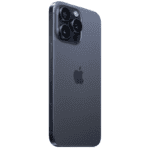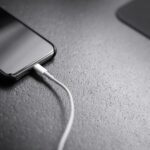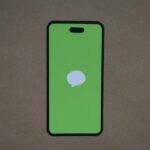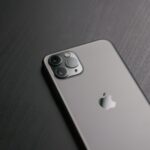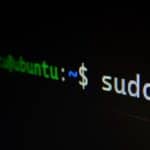The *#21# code on iPhone (also known as Code 21) is a simple tool for checking call forwarding settings. When dialed, it shows if any calls, texts, or data are being redirected to another number. This code works on both iPhones and some Android devices.
Many users wonder if *#21# can reveal if their phone is tapped. This is a common misconception. The code only displays call forwarding information. It does not indicate any surveillance or wiretapping on the device.
iPhone users can access various hidden options through secret codes like *#21#. These codes allow users to view detailed cellular signal strength and set up call barring. While some may find these features useful, they are not related to detecting unauthorized access to the phone.
Decoding *#21# on iPhone: Fact vs. Fiction
The code *#21# has circulated online, often accompanied by claims that it reveals if your iPhone is being tapped or monitored. However, the reality is a bit more nuanced. Let’s break down what this code actually does and address the associated hoax:
What *#21# Actually Does
On iPhones, *#21# accesses a call forwarding menu. This menu displays the status of different types of call forwarding settings, including:
- Voice: If enabled, your incoming calls are forwarded to another number.
- Data: If enabled, your mobile data usage is routed through another number (rarely used).
- Fax: If enabled, incoming faxes are forwarded to another number (not applicable to most iPhones).
- SMS: If enabled, your incoming text messages are forwarded to another number.
- Sync: If enabled, data synchronization (like contacts and calendar) is routed through another number (rarely used).
- Async: Similar to Sync, but for asynchronous data transfers (rarely used).
- Packet access: If enabled, packet-switched data (like internet access) is routed through another number (rarely used).
- Pad access: Similar to Packet access, but for specific types of data connections (rarely used).
Important Note: These settings are typically only changed by the user or with their knowledge. If you see any forwarding enabled that you didn’t set up yourself, it could indicate a potential issue.
The Hoax
The hoax surrounding *#21# claims that it reveals if your iPhone is being secretly monitored or tapped. This is misleading. While the code does show call forwarding settings, it doesn’t provide any information about unauthorized surveillance or spying.
Protecting Your Privacy
If you’re concerned about your iPhone’s security and privacy, focus on these measures:
- Strong Passcode: Use a complex and unique passcode to prevent unauthorized access.
- Face ID/Touch ID: Enable Face ID or Touch ID for an extra layer of security.
- Updated Software: Keep your iPhone’s software updated to the latest version to benefit from security patches.
- Beware of Phishing: Be cautious of suspicious emails, messages, or links.
- Two-Factor Authentication: Enable two-factor authentication on your Apple ID.
- Monitor Account Activity: Regularly review your Apple ID account activity.
| Protective Measure | Description |
|---|---|
| Strong passcode | Prevents unauthorized access |
| Face ID/Touch ID | Adds biometric security |
| Updated software | Installs latest security updates |
| Beware of phishing | Avoid suspicious links and emails |
| Two-factor authentication | Secures your Apple ID |
| Monitor account activity | Checks for suspicious logins |
Addressing Potential Concerns
If you see unexpected call forwarding settings enabled after dialing *#21#, take these steps:
- Disable Call Forwarding: Go to Settings > Phone > Call Forwarding to disable any unwanted forwarding.
- Change Passwords: Change your Apple ID password and any other relevant passwords.
- Contact Apple Support: If you suspect your device has been compromised, contact Apple support for assistance.
By understanding the true function of *#21# and taking proactive steps to protect your privacy, you can ensure your iPhone remains secure.
Key Takeaways
- *#21# displays call forwarding status on iPhones
- The code does not reveal if a phone is tapped or under surveillance
- Secret codes on iPhones can access various hidden settings and information
Understanding *#21# on iPhone
The *#21# code on iPhone serves as a tool for checking call forwarding settings. This feature access code provides information about call diversion status and interacts with mobile carrier systems.
Functionality of *#21#
*#21# is an interrogation code that reveals call forwarding settings on iPhones. When dialed, it displays the status of call forwarding for different types of calls. Users can see if calls are being redirected and to which number. This code works across various service providers, including Verizon.
The code helps users quickly check their phone settings without navigating through menus. It shows if call forwarding is active for voice calls, data calls, or SMS. This information is useful for managing communication preferences and troubleshooting missed calls.
Interrogation Codes and Mobile Carriers
Interrogation codes like *#21# are part of a larger set of feature access codes. These codes allow users to interact with mobile carrier systems directly. Different codes serve various purposes, such as checking voicemail settings or viewing call barring status.
Mobile carriers support these codes to give customers easy access to network features. The functionality may vary slightly between providers. Some codes work across all carriers, while others are carrier-specific. Users can find a list of supported codes in their carrier’s documentation or by contacting customer support.
Security Concerns with *#21#
Contrary to some online claims, *#21# does not reveal if a phone is wiretapped. This misconception stems from viral social media posts. In reality, the code only shows call forwarding settings.
Dialing *#21# and receiving an “incorrect number” message doesn’t indicate surveillance. It simply means the code isn’t supported or is entered incorrectly. For genuine security concerns, users should contact their service provider or consult official Apple support resources.
It’s important to note that legitimate wiretaps are not detectable through simple dialing codes. Users worried about privacy should focus on standard security practices, like using strong passwords and keeping their iOS updated.
The Role of *#21# in Call Management
The *#21# code serves as a crucial tool for managing call settings on iPhones. It allows users to check and control call forwarding options, enhance privacy, and access diagnostic information.
Call Forwarding and Call Waiting
The *#21# code primarily deals with call forwarding settings. When dialed, it displays the current status of call forwarding on the device. Users can see if calls are being redirected to another number and which types of calls are affected.
Call forwarding can be set up for voice calls, data calls, and text messages. The *#21# code helps users verify these settings quickly. To disable call forwarding, users can dial ##21# or ##002#.
Call waiting, while not directly controlled by *#21#, is a related feature that can be checked using similar codes. Users can dial *#43# to view their call waiting status.
Enhancing Call Privacy
The *#21# code also plays a role in maintaining call privacy. By checking call forwarding settings, users can ensure their calls are not being redirected without their knowledge.
For additional privacy features, users can explore other codes:
- *#31#: Checks if caller ID is hidden for outgoing calls
- 3001#12345#: Accesses Field Test Mode for detailed network information
These codes help users manage their call privacy and understand how their device interacts with cellular networks.
Advanced Diagnostic Functions
Beyond call management, *#21# offers diagnostic capabilities. It can reveal information about the device’s connection to the cellular network and data usage patterns.
Some key diagnostic functions include:
- Checking cellular signal strength
- Viewing data usage statistics
- Accessing the device’s IMEI (International Mobile Equipment Identity)
These features help users troubleshoot connection issues and monitor their device’s performance. For more in-depth diagnostics, users can contact their service provider or Apple Support.
Frequently Asked Questions
The *#21# code on iPhones relates to call forwarding settings. Users often have questions about its purpose, usage, and potential impacts on their devices.
What is the purpose of dialing *#21# on an iPhone?
Dialing *#21# on an iPhone displays the call forwarding status. It shows whether calls are being redirected to another number. This code is a quick way to check if any forwarding services are active on the device.
How can I deactivate the *#21# feature on my iPhone?
To turn off call forwarding, dial ##21# or ##002#. These codes cancel all call forwarding options. Users can also disable call forwarding through the iPhone’s Settings app under the Phone section.
Is there any risk associated with using the *#21# code on my iPhone?
Using *#21# is safe and poses no risk to the iPhone. It only retrieves information about call forwarding settings. The code does not change any settings or compromise the device’s security.
What should I do if I receive an error message when entering *#21# on my iPhone?
If an error occurs, ensure you’re entering the code correctly. Try again after a few minutes. If the problem persists, contact your mobile carrier. They can verify if the feature is supported on your plan.
How does *#21# affect call forwarding settings on an iPhone?
*#21# does not change call forwarding settings. It only displays the current status. To modify call forwarding, use the Settings app or contact your mobile carrier for assistance.
Can the *#21# code be used for checking anything other than call forwarding?
The *#21# code is specific to call forwarding. It does not provide information about other phone features. For checking other settings, different codes or the iPhone’s Settings app should be used.

